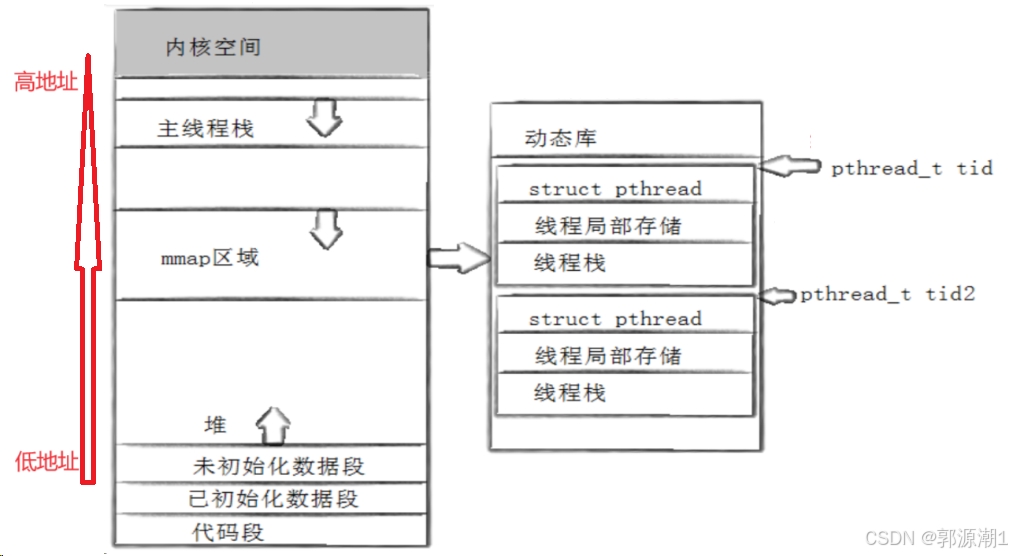在 Python 中,生成器、迭代器、闭包、装饰器、元类、垃圾回收和内建函数是一些重要的概念和功能,它们对于编写高效、灵活的代码非常重要。下面我们逐一详细介绍这些概念及其用法。
1. 生成器(Generator)
生成器是一个函数,它返回一个迭代器,且能在函数中多次返回值而不丢失状态。生成器通过 yield 关键字来生成值,而不是像普通函数那样通过 return 返回。生成器的特点是懒加载(即按需生成数据)和节省内存。
示例:生成器
def count_up_to(max):
count = 1
while count <= max:
yield count # 使用 yield 返回一个值
count += 1
gen = count_up_to(5)
for num in gen:
print(num) # 输出 1 2 3 4 5
生成器每次调用 yield 时会暂停,并记住当前的状态,直到下次迭代时恢复。
2. 迭代器(Iterator)
迭代器是一个实现了 __iter__() 和 __next__() 方法的对象。可以通过 for 循环或 next() 函数来获取序列中的下一个元素。当序列没有元素时,抛出 StopIteration 异常。
示例:自定义迭代器
class MyIterator:
def __init__(self, start, end):
self.current = start
self.end = end
def __iter__(self):
return self
def __next__(self):
if self.current > self.end:
raise StopIteration
self.current += 1
return self.current - 1
it = MyIterator(1, 5)
for num in it:
print(num) # 输出 1 2 3 4 5
3. 闭包(Closure)
闭包是指一个函数能够记住并访问其定义时的外部作用域中的变量,即使这个函数在外部作用域外部被调用。闭包可以用于函数工厂等场景。
示例:闭包
def outer(x):
def inner(y):
return x + y # inner 函数引用了外部函数 outer 的变量 x
return inner
add_5 = outer(5) # 生成一个闭包
print(add_5(10)) # 输出 15
在这个例子中,inner 是一个闭包,它记住了 outer 函数中的变量 x,即使 outer 函数已经执行完毕。
4. 装饰器(Decorator)
装饰器是一种用于在运行时动态地修改函数或方法行为的机制。装饰器是高阶函数,接受一个函数作为参数,并返回一个新的函数。它常常用于日志记录、性能计时、权限控制等场景。
示例:装饰器
def decorator(func):
def wrapper():
print("函数执行前")
func()
print("函数执行后")
return wrapper
@decorator
def say_hello():
print("Hello!")
say_hello() # 输出:
# 函数执行前
# Hello!
# 函数执行后
@decorator 是装饰器的语法糖,它会将 say_hello 函数传递给 decorator 函数,并用 wrapper 替换原函数。
5. 元类(Metaclass)
元类是用于创建类的类。每个类都是某个元类的实例。通过元类可以控制类的创建过程、修改类的属性和方法等。
示例:自定义元类
class MyMeta(type):
def __new__(cls, name, bases, dct):
# 修改类的属性或方法
dct['greeting'] = 'Hello, world!'
return super().__new__(cls, name, bases, dct)
class MyClass(metaclass=MyMeta):
pass
print(MyClass.greeting) # 输出 Hello, world!
在这个例子中,MyMeta 是一个元类,它在类 MyClass 被创建时添加了一个新的属性 greeting。
6. 垃圾回收(Garbage Collection)
Python 中使用引用计数和垃圾回收机制来管理内存。当一个对象的引用计数降为 0 时,Python 会自动回收该对象的内存。Python 使用了 标记清除 和 分代回收 的垃圾回收机制。通常,Python 用户无需手动释放内存,但可以通过 gc 模块控制和查看垃圾回收的过程。
示例:手动触发垃圾回收
import gc
gc.collect() # 手动触发垃圾回收
7. 内建函数(Built-in Functions)
Python 提供了许多内建函数,这些函数可以直接使用,无需导入模块。常用的内建函数包括 len(), type(), range(), sum(), sorted(), map(), filter() 等。
示例:常见内建函数
# len() 返回对象的长度
print(len([1, 2, 3])) # 输出 3
# type() 获取对象的类型
print(type(42)) # 输出 <class 'int'>
# range() 生成一个整数序列
for i in range(5):
print(i) # 输出 0 1 2 3 4
# sum() 求和
print(sum([1, 2, 3])) # 输出 6
# sorted() 排序
print(sorted([3, 1, 2])) # 输出 [1, 2, 3]
# map() 应用函数到每个元素
result = map(lambda x: x * 2, [1, 2, 3])
print(list(result)) # 输出 [2, 4, 6]
# filter() 过滤符合条件的元素
result = filter(lambda x: x > 2, [1, 2, 3])
print(list(result)) # 输出 [3]
总结
- 生成器:使用
yield返回一个惰性计算的迭代器,节省内存。- 迭代器:实现了
__iter__和__next__方法的对象,支持遍历。- 闭包:函数可以记住并访问其定义时的外部变量。
- 装饰器:用于动态修改函数或方法行为的函数。
- 元类:用于创建类的类,可以修改类的创建过程。
- 垃圾回收:Python 使用自动垃圾回收机制管理内存,用户无需手动管理对象的内存。
- 内建函数:Python 提供了多种内建函数来处理常见的任务,如计算长度、排序、映射等。


















